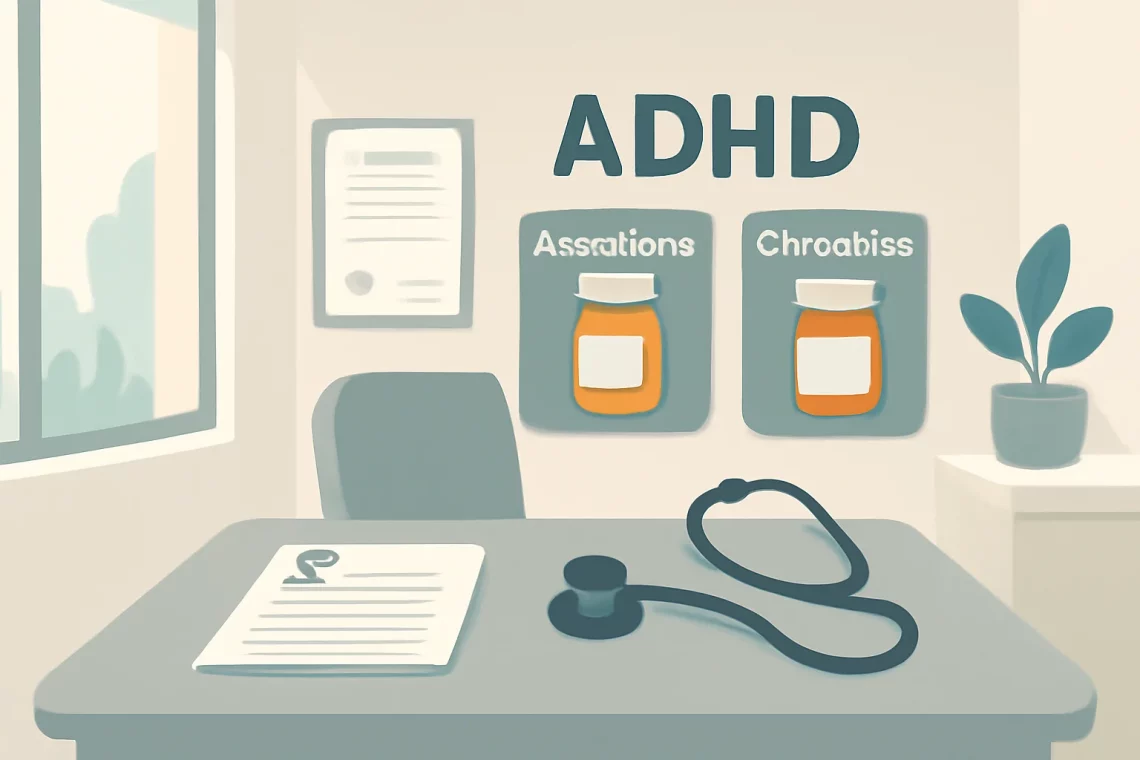
Guanfacine vs Clonidine: Choosing the Right Medication for ADHD
Guanfacine and clonidine are both medications that belong to a class known as alpha-2 adrenergic agonists. They are primarily used to treat attention deficit hyperactivity disorder (ADHD) and hypertension, but they have gained attention for their potential benefits in various other conditions. As the medical community continues to explore their pharmacological profiles, patients and healthcare professionals alike seek to understand the nuances of each medication.
Both guanfacine and clonidine work by affecting certain receptors in the brain, leading to a decrease in sympathetic nervous system activity. This can result in lowered heart rate and blood pressure, as well as improvements in attention and impulse control. However, despite their similarities, these medications have distinct characteristics, mechanisms of action, and side effect profiles, which can influence treatment decisions.
Patients who are prescribed these medications often have questions about their differences, effectiveness, and potential side effects. Understanding these aspects can empower individuals to engage in informed discussions with their healthcare providers.
Mechanism of Action
Guanfacine and clonidine share a similar mechanism of action, as both target alpha-2 adrenergic receptors in the brain. By stimulating these receptors, the drugs inhibit the release of norepinephrine, a neurotransmitter that plays a vital role in the body’s fight-or-flight response. This inhibition leads to a calming effect on the central nervous system, which can be beneficial in treating conditions like ADHD and hypertension.
Guanfacine is often considered to have a more selective action on alpha-2A receptors, particularly in the prefrontal cortex, an area of the brain associated with executive functions such as attention, impulse control, and working memory. This selective action is believed to contribute to guanfacine’s efficacy in managing ADHD symptoms.
On the other hand, clonidine has a broader action, affecting both alpha-2A and alpha-2B receptors. This wider range of action can lead to varied effects on blood pressure and heart rate, making clonidine a valuable option for managing hypertension.
Both medications ultimately result in a decrease in sympathetic outflow, leading to lower heart rates and blood pressure levels. However, their differing receptor affinities can result in distinct clinical outcomes. For instance, while guanfacine may be more effective for ADHD-related symptoms, clonidine may be preferred in situations where immediate blood pressure control is necessary.
Understanding these mechanisms is crucial for healthcare providers when considering treatment options for patients. Individual responses to these medications can vary significantly, and a thorough assessment of the patient’s medical history, current conditions, and treatment goals is essential to determine the most appropriate medication.
Indications and Uses
Guanfacine and clonidine are prescribed for various medical conditions, with ADHD and hypertension being the most common.
Guanfacine is primarily used to treat ADHD, particularly in children and adolescents. Research has shown that it can lead to improvements in attention, hyperactivity, and impulsivity. It is often prescribed as part of a comprehensive treatment plan that may include behavioral therapy and other interventions. Guanfacine is particularly beneficial for individuals who may not tolerate stimulant medications well or for those who have co-existing conditions such as anxiety disorders.
In addition to ADHD, guanfacine has also shown promise in treating conditions like oppositional defiant disorder (ODD) and tic disorders. Its calming effects can help manage the symptoms associated with these conditions, providing a more balanced approach to treatment.
Clonidine, while also used for ADHD, has a broader range of applications. It is commonly used to treat hypertension, providing effective blood pressure control. Clonidine can be particularly useful in patients who have not responded to other antihypertensive medications or those who may experience side effects from traditional blood pressure medications.
Moreover, clonidine has been utilized in managing withdrawal symptoms in patients undergoing detoxification from substances like opioids and alcohol. Its sedative properties help alleviate anxiety and agitation during withdrawal, making the process more tolerable for patients.
Both medications have their unique advantages, and the choice between guanfacine and clonidine will often depend on the specific needs of the patient, their medical history, and the conditions being treated.
Side Effects and Considerations
As with any medication, guanfacine and clonidine come with potential side effects that patients and healthcare providers should carefully consider.
Common side effects of guanfacine include drowsiness, fatigue, and dry mouth. Some patients may also experience gastrointestinal issues, such as nausea or constipation. These side effects are often manageable, but they can influence a patient’s adherence to the treatment plan.
In some cases, guanfacine may cause a drop in blood pressure, which can lead to dizziness, especially when standing up quickly. This phenomenon, known as orthostatic hypotension, is essential to monitor, especially in individuals who may already have low blood pressure or are taking other medications that affect blood pressure.
Clonidine shares many of the same side effects as guanfacine, including sedation and dry mouth. However, it may also lead to more pronounced cardiovascular effects, such as bradycardia (slow heart rate) or hypotension. Patients on clonidine should be monitored closely for these effects, particularly during the initiation of treatment or when increasing the dose.
Both medications can lead to withdrawal symptoms if discontinued abruptly, particularly clonidine. This emphasizes the importance of following a healthcare provider’s guidance regarding dosage adjustments and discontinuation.
Patients should also be aware of potential interactions with other medications, including antidepressants, antihypertensives, and sedatives. A thorough review of the patient’s medication list is crucial to minimize the risk of adverse interactions.
Ultimately, while guanfacine and clonidine can be effective treatment options, understanding the side effects and considerations associated with each medication is vital for safe and effective use.
Patient Experience and Conclusion
The experience of patients taking guanfacine or clonidine can vary widely based on individual factors, including age, overall health, and the specific condition being treated.
Many patients report positive outcomes with guanfacine, particularly in managing ADHD symptoms. Parents often notice improvements in their children’s ability to focus and control impulses, leading to better performance in school and improved relationships with peers and family. However, some may find the sedative effects to be a drawback, particularly if they interfere with daily activities.
Clonidine, while effective for blood pressure management and ADHD, may present challenges related to its sedative properties. Patients may appreciate the calming effects but could struggle with daytime drowsiness. For those using clonidine for hypertension, the medication’s ability to control blood pressure can significantly enhance their quality of life, reducing the risks associated with uncontrolled hypertension.
In conclusion, both guanfacine and clonidine offer valuable benefits for patients dealing with ADHD, hypertension, and other conditions. The choice between them should be made collaboratively between the patient and their healthcare provider, taking into account individual needs, side effect profiles, and treatment goals.
It is essential for patients to communicate openly with their healthcare providers about their experiences, concerns, and any side effects they may encounter. This dialogue can lead to more effective treatment plans and improved health outcomes.
**Disclaimer: This article is not intended as medical advice. Always consult a healthcare professional for medical concerns or before starting any new medication.**




